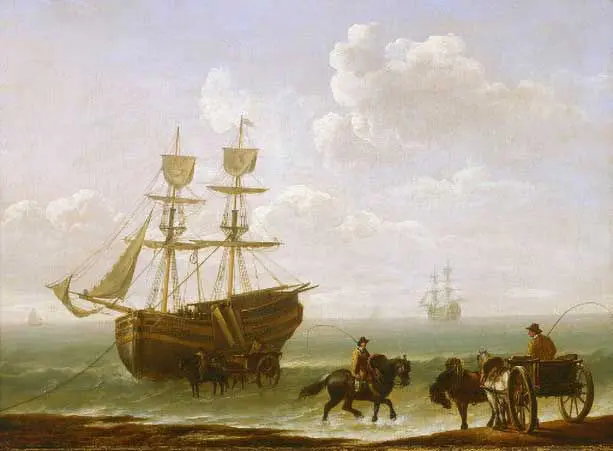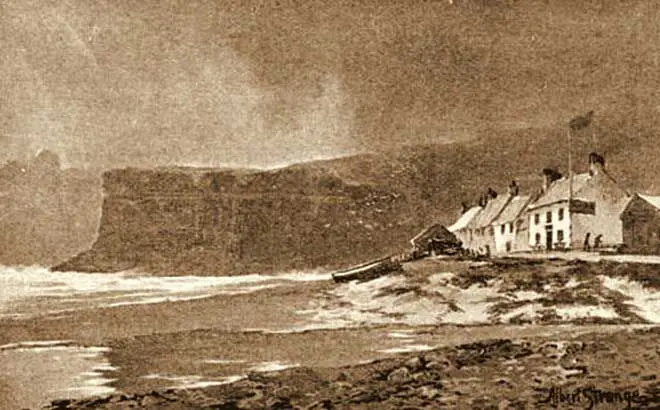
Collier brig unloading on beach
Painting circa 1790
British colliers were typically made with strong hulls that allowed them to be beached in places where there was no harbour. At low tide, carts were taken alongside the collier and coal was unloaded into them. When the railways were built this provided competition for the colliers that delivered to coastal towns, but some continued in this trade for much of the 19th century.
Brigs were prominent in the coastal coal trade of British waters. 4,395 voyages to London with coal were recorded in 1795. With an average of eight or nine trips per year for one vessel, that is a fleet of over 500 colliers trading to London alone. Other ports and coastal communities were also served by colliers trading to Britain's coal ports.
From Wikipedia




